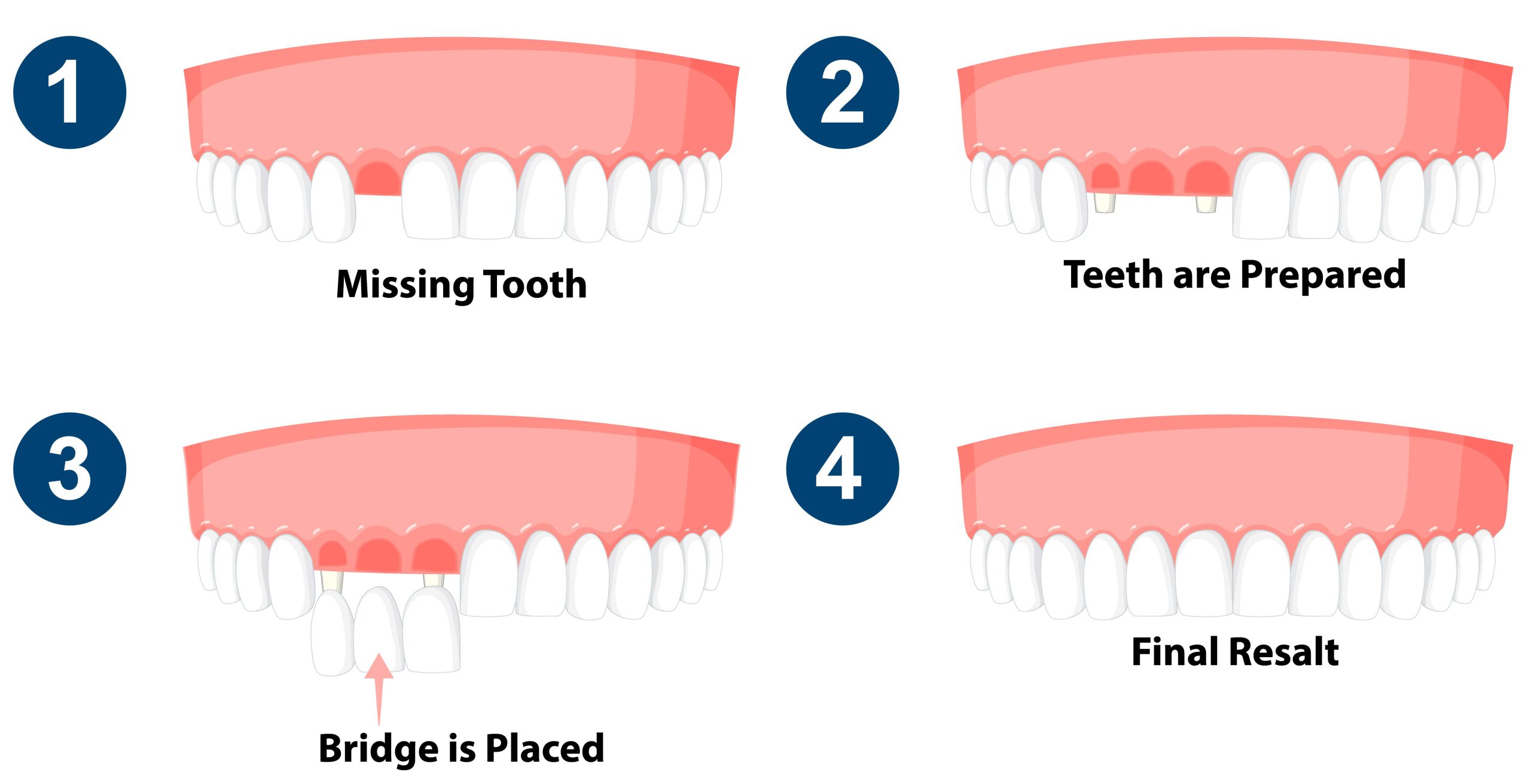Dental bridges are restorative dental devices used to replace one or more missing teeth. They essentially “bridge” the gap where teeth are absent. A typical dental bridge consists of two main parts:
- Pontics: These are the replacement teeth that fill the gap created by missing teeth. They sit in the gap and are the visible part of the bridge.
- Abutment Teeth: These are the teeth on either side of the gap. They serve as anchors for the bridge. A bridge can be supported by natural teeth or dental implants that serve as abutment teeth.
The process usually involves shaping the abutment teeth so that they can hold a crown. Then, the crowns and the pontic (or pontics) are fused together to form one piece, which is the bridge. Once in place, dental bridges can restore the function and appearance of the teeth, improving chewing ability, speech, and aesthetics. They also prevent the remaining teeth from shifting, which can cause bite and jaw problems.

Restored Function
They effectively restore the ability to chew and speak properly, ensuring that the bite distributes force evenly when chewing.
Aesthetic Improvement
By filling the gap left by a missing tooth, bridges prevent the adjacent teeth from drifting out of position, maintaining proper tooth alignment.
Jaw and Bite Maintenance
They help maintain the proper position of the jaw and correct bite issues that can arise due to missing teeth.
Prevention of Misalignment
By filling the gap left by a missing tooth, bridges prevent the adjacent teeth from drifting out of position, maintaining proper tooth alignment.
Durable and Long-lasting
With proper care and maintenance, dental bridges can last for many years.
Boosted Self-Esteem
Having a complete and functional set of teeth can significantly boost one’s confidence and self-esteem.
Easy Maintenance
Unlike removable dentures, bridges are fixed prosthetics, making them easy to care for. Regular brushing, flossing, and dental check-ups are generally sufficient for maintenance.
Protection for Adjacent Teeth
By covering teeth on either side of the gap with crowns (in traditional bridges), the structure and strength of those abutment teeth can be preserved and protected.

Considering dental bridges to replace missing teeth, improve aesthetics, or restore worn-down teeth? The dentists at Ormeau Dental have the expertise to evaluate and provide the highest-quality dental bridges tailored for you.
Reach out to us today!

- Preparation of Abutment Teeth: The procedure begins with the dentist numbing the area to prepare the abutment teeth—those on either side of the gap. These teeth are reshaped by removing a portion of enamel to allow room for the crown that will be placed over them. Impressions of the teeth are then taken, serving as a model from which the dental bridge, pontic (or false tooth), and crowns will be made.
- Temporary Bridge Placement: To protect the exposed teeth and gums, a temporary bridge will be put in place. This ensures that the patient doesn’t experience discomfort or sensitivity, and it also maintains the aesthetics of the smile while the permanent bridge is being crafted in a dental laboratory.
- Permanent Bridge Fitting: During the next visit, the temporary bridge is removed, and the new porcelain or metal bridge is checked and adjusted, as necessary, to achieve a proper fit. Multiple visits might be needed to check the fit of the metal framework and bite. This ensures the bridge fits comfortably and aligns well with the surrounding teeth.
- Bridge Cementation: Once the bridge is correctly adjusted, it’s cemented into place, providing a stable, long-lasting solution for the missing tooth or teeth. Proper care, including regular dental check-ups and good oral hygiene practices, will ensure the longevity of the bridge.
Enjoy extra benefits and maximum rebates on specific services at Ormeau Dental, your preferred provider for leading health funds.


